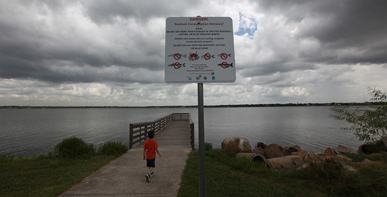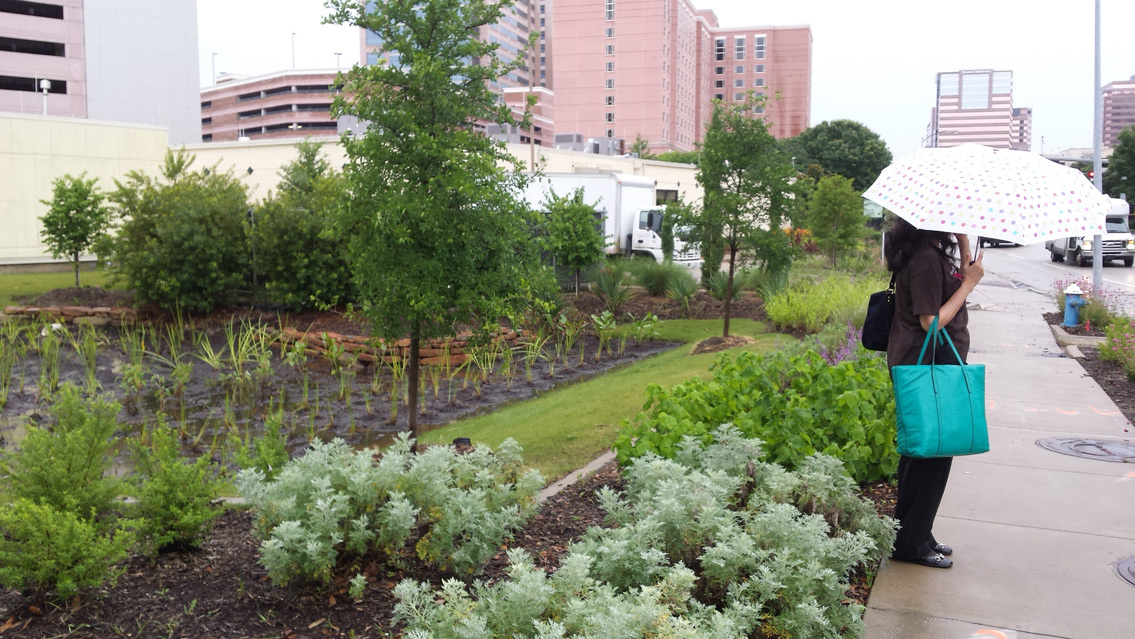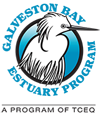The water quality of Galveston Bay is essential to human and aquatic life. Two types of pollution can create water quality problems for the bay:
- Nonpoint source pollution: rainfall-runoff or floodwaters contain contaminants from many land-based sources, including agriculture, construction, on-site sewage facilities, pet waste, lawn care products, and auto maintenance.
- Point source pollution: discharges such as effluent from industry and municipal wastewater treatment facilities.
There are many ways to improve water quality in bays and bayous. These are some of the most common strategies used by our Water and Sediment Quality subcommittee and partners:
Watershed-Based Plans are strategies for mitigating impairments and/or concerns in water bodies. In Galveston Bay, bacteria, dissolved oxygen, nutrients, Polychlorinated Biphenyls (PCBs), and dioxins are some of the parameters resulting in impairments (Houston-Galveston Area Council [H-GAC], 2014). There are two types of Watershed-Based Plans in the Galveston Bay estuary.
A Total Maximum Daily Load (TMDL) is a regulatory process triggered when a water body is placed on the TCEQ’s list of impaired water bodies, the 303(d) list. The TMDL calculates the maximum amount of a pollutant that a waterbody can receive and still meet water quality standards. An Implementation Plan (I-Plan) is a stakeholder-driven plan that describes how the pollutant reductions described in the TMDL will be achieved.
East and West Forks of the San Jacinto River TMDL and Implementation Plan
Bacteria Implementation Group (BIG)
Upper Oyster Creek TMDL and Implementation Plan
Galveston Bay Bacteria Reduction Plan
Watershed Protection Plans are voluntary (non-regulatory) plans developed by watershed stakeholders. A Watershed Protection Plan can be developed to preserve and / or restore water bodies. Local stakeholders work to improve or protect water quality by looking at issues beyond typical water quality parameters.
Double Bayou WPP
Highland/Marchand Bayou WPP
Cedar Bayou WPP
Dickinson Bayou WPP
Bastrop Bayou WPP
Download the Ensure Safe Human and Aquatic Life Use Action Plans of the draft Galveston Bay Plan, 2nd Edition:
Nonpoint Source Action Plan (NPS)
Point Source Action Plan (PS)
Public Health and Awareness Action Plan (PHA)


Best management practices include any practice that could be implemented to protect water quality and ensure safe human and aquatic life use. The successful implementation of best management practices is dependent on gaining early and sustained participation and involvement from stakeholders in the watershed, which can be a time intensive process. Pet waste disposal stations, riparian buffers, pump-out stations for boater waste, and stormwater treatment wetlands are some examples of best management practices in the Galveston Bay watershed.
Priorities for ensuring safe human and aquatic life use include:
- support watershed-based plan development and implementation,
- support nonpoint source education and outreach campaigns,
- implement nonpoint source best management practices,
- host nonpoint source workshops,
- support stormwater education programs,
- maintain the capacity and integrity of sanitary sewer systems across the region to encourage compliance,
- increase wastewater treatment facility compliance,
- improve seafood advisory awareness,
- improve regional contact recreation risk awareness,
- improve regional contact recreation safety by implementing watershed-based plans,
- improve the safety of human shellfish consumption from bay waters by implementing watershed-based plans, and
- improve the safety of human finfish consumption by implementing watershed-based plans.
View our current projects in water and sediment quality.
View our completed projects in water and sediment quality.
Work Cited:
Houston-Galveston Area Council. (2014). Basin Highlights Report: How’s the Water. Retrieved from http://www.h-gac.com/community/water/publications/hows-the-water-basin-highlights-report-2014.pdf
